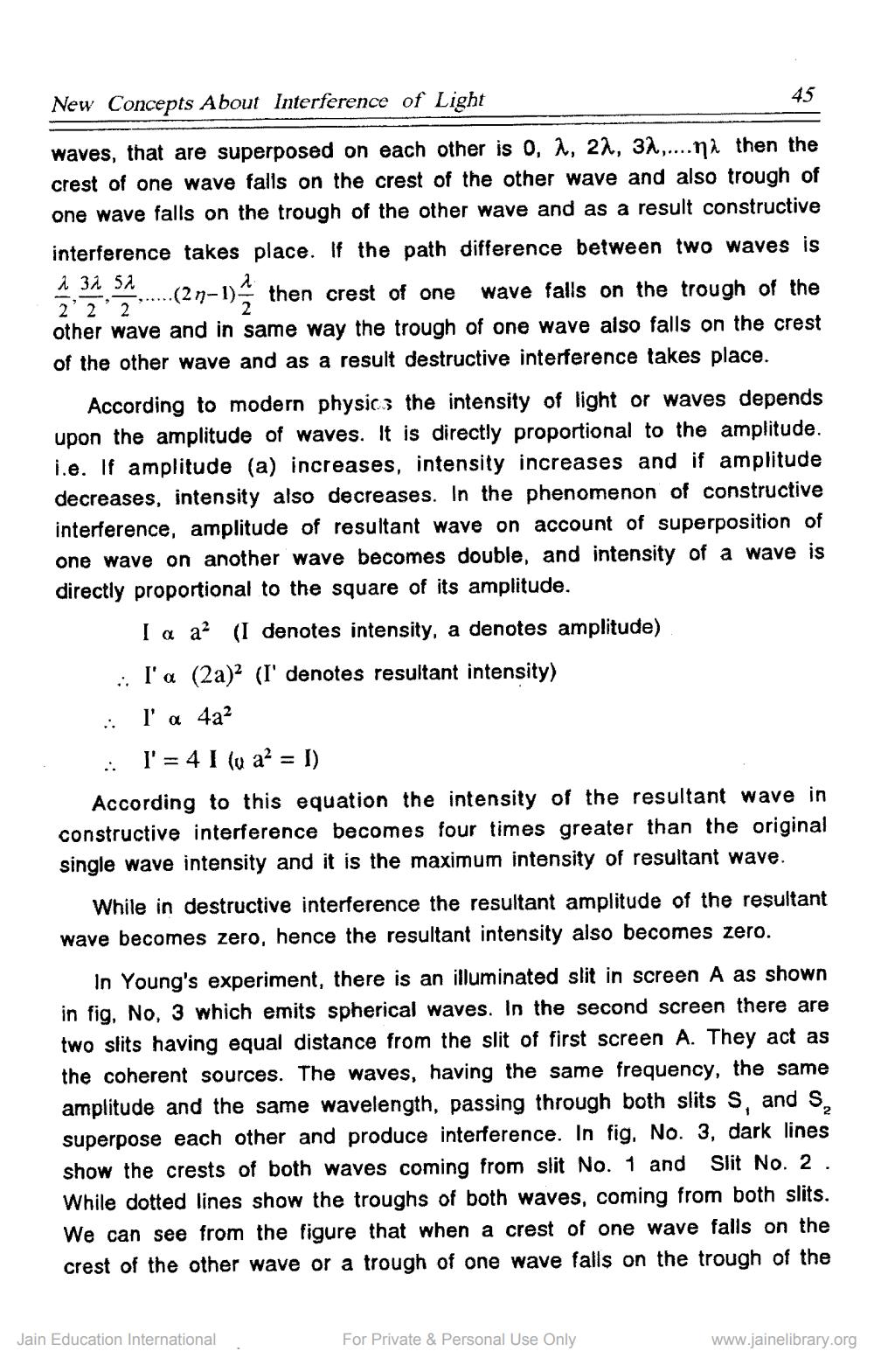________________
New Concepts About Interference of Light
45
waves, that are superposed on each other is 0, A, 2A, 3A,.... then the crest of one wave falls on the crest of the other wave and also trough of one wave falls on the trough of the other wave and as a result constructive interference takes place. If the path difference between two waves is
λ 32 52
λ
(2n-1) then crest of one
wave falls on the trough of the 2 2 2 other wave and in same way the trough of one wave also falls on the crest of the other wave and as a result destructive interference takes place.
According to modern physics the intensity of light or waves depends upon the amplitude of waves. It is directly proportional to the amplitude. i.e. If amplitude (a) increases, intensity increases and if amplitude decreases, intensity also decreases. In the phenomenon of constructive interference, amplitude of resultant wave on account of superposition of one wave on another wave becomes double, and intensity of a wave is directly proportional to the square of its amplitude.
I a a2 (I denotes intensity, a denotes amplitude)
I'a (2a)2 (I' denotes resultant intensity)
l' a 4a2
l' = 4 I (u a2 = I)
According to this equation the intensity of the resultant wave in constructive interference becomes four times greater than the original single wave intensity and it is the maximum intensity of resultant wave.
..
..
..
While in destructive interference the resultant amplitude of the resultant wave becomes zero, hence the resultant intensity also becomes zero.
In Young's experiment, there is an illuminated slit in screen A as shown in fig, No, 3 which emits spherical waves. In the second screen there are two slits having equal distance from the slit of first screen A. They act as the coherent sources. The waves, having the same frequency, the same amplitude and the same wavelength, passing through both slits S, and S2 superpose each other and produce interference. In fig. No. 3, dark lines Slit No. 2. show the crests of both waves coming from slit No. 1 and While dotted lines show the troughs of both waves, coming from both slits. We can see from the figure that when a crest of one wave falls on the crest of the other wave or a trough of one wave falls on the trough of the
Jain Education International
For Private & Personal Use Only
www.jainelibrary.org




